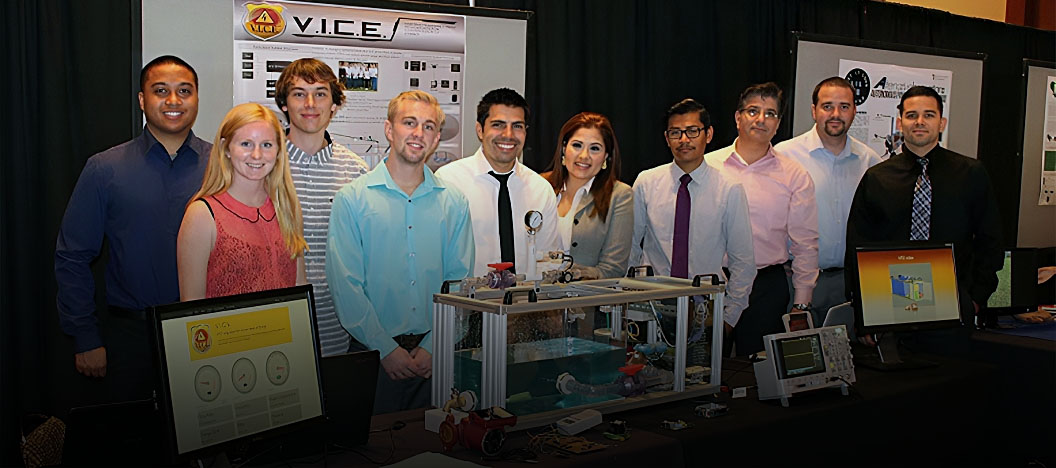Design Day 2024
Engineering Senior Design Day 2024 showcased innovative design projects the undergraduate Engineering students create throughout their academic year. This event is a combination of the Engineering Senior Design classes in Aerospace Engineering, Civil, Construction & Environmental Engineering, Electrical & Computer Engineering, and Mechanical Engineering.
For an in depth look at all of the senior design projects for 2024, please visit our digital 2024 Senior Design Day booklet.
Engineering Senior Design Day 2024 was held in Montezuma Hall on May 1, 2024 from 1:00pm - 4:00pm (PST).
DESIGN DAY PROJECTS
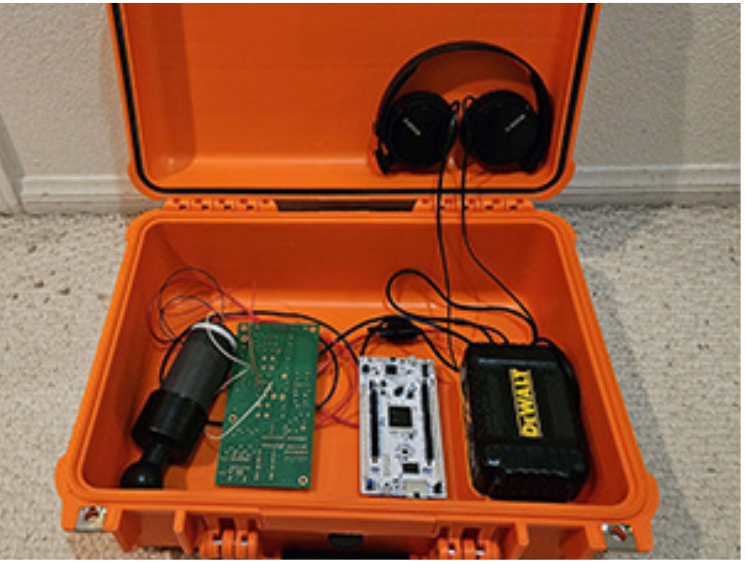
Acoustic Ocean Monitoring Device
Our device targets the frequency spectrum of whale songs as well as other sounds
in the ocean. This is achieved by the implementation of both hardware and software
that works together to amplify sound, mitigate noise interference, output sound that
can be listened to, and transcribes the data into a form that can later be used in
additional audio processing.
- Team Members: Jana Gonzalez, Gabriel Lang, James Timothy O’Shea, Hien Phan, Abraham Shalash, Cristian Zuniga
- Advisors: Prof. Barry Dorr, PE
- Sponsor: SDSU Electrical and Computer Engineering
- AUV Pathfinders's Video
- Team AUV Pathfinders's Poster
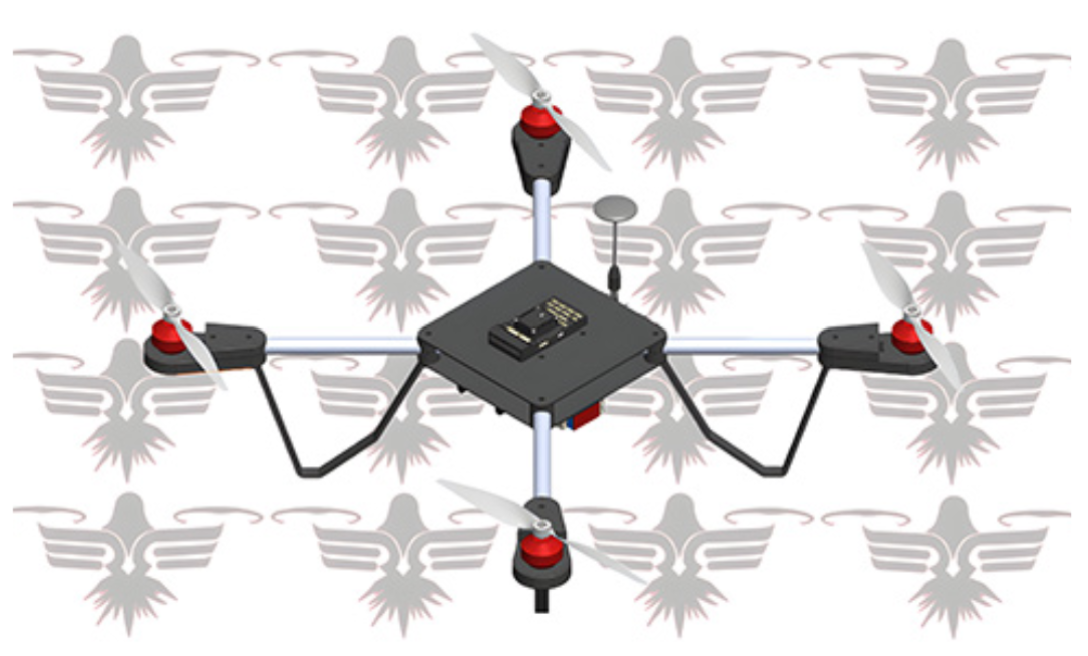
California Unmanned Aerial Systems Competition (C-UASC)
This project involved designing, manufacturing, and integrating an Unmanned Aerial
System (UAS) for the California Unmanned Aerial Systems Competition. The UAS is
designed for autonomous flight, waypoint navigation, object detection/classification/
localization, and delivery of an undamaged payload at a marked target.
- Team Members: Lana Ayyash, Ryan DaWood, Patrick Moore, Hector Olmos-Pantoja, Kaia Ralston, Madison Rogers,
Suhail Saqan, Saif Shinkar, Sean Wolf - Advisors: Oscar Correa, Prof. Barry Dorr, and Dr. Scott Shaffar, SDSU
- Sponsor: SDSU Student Success Fee
- Dronely Raven's Video
- Team Dronely Raven's Poster

Vortex Shedding Flowmeter
The Vortex Shedding Flowmeter is a single hole prototype design that can withstand
up to 40 psi of internal pipe pressure and accurately read across a range of 10-100
gpm flow with an accuracy of 5%. The design utilizes a saddle like clamp system with
the bluff body and piezoelectric sensor inserted through a 3/4” hole in a 2” schedule
40 PVC pipe. The system utilizes a PCB board with an integrated LCD screen,
microcontroller and RS-485 to control and monitor the flowmeter.
- Team Members: Saqer Alghanem, Nicholas Barrozo, Tobias Booth, John Frisch, Fabian Gutierrez Juarez,
Kevin Kakkary, Nicholas Palmer, Lorena Penney, Naomi Walther - Advisors: Mark Bauckman and Mark Smith, Fluidra
Dr. Scott Shaffar and Prof. Barry Dorr, SDSU - Sponsor: Fluidra
- FlowTec's Video
- Team FlowTec's Poster

Fixed Power Payload Input/Output (FP PLIO)
Booz Allen’s Fixed Power Payload Input Output (FP PLIO) system serves as a universal
translator for third-party sensors. Specifically, the FP PLIO is applied on Booz Allen’s
unmanned surface vehicle (USV), the Man-Portable Tactical Autonomous System
(MANTAS). On the MANTAS, the FP PLIO controls all of the additional systems
including sensors, cameras, and other components. It enables the ability to deliver
key information to critical military personnel while increasing the safety of personnel
as the vehicle is unmanned.
- Team Members: Tanner Hurst, Samuel Kneale, Kieran Looney, Samuel Lucas, Andy Lucio, Arely Nieblas,
Alejandro Soto, Riley Stewart, Justin Taing - Advisors: Prof. Barry Dorr and Dr. Scott Shaffar, SDSU
- Sponsor: Booz Allen Hamilton
- FPP Force's Video
- Team FPP Force's Poster
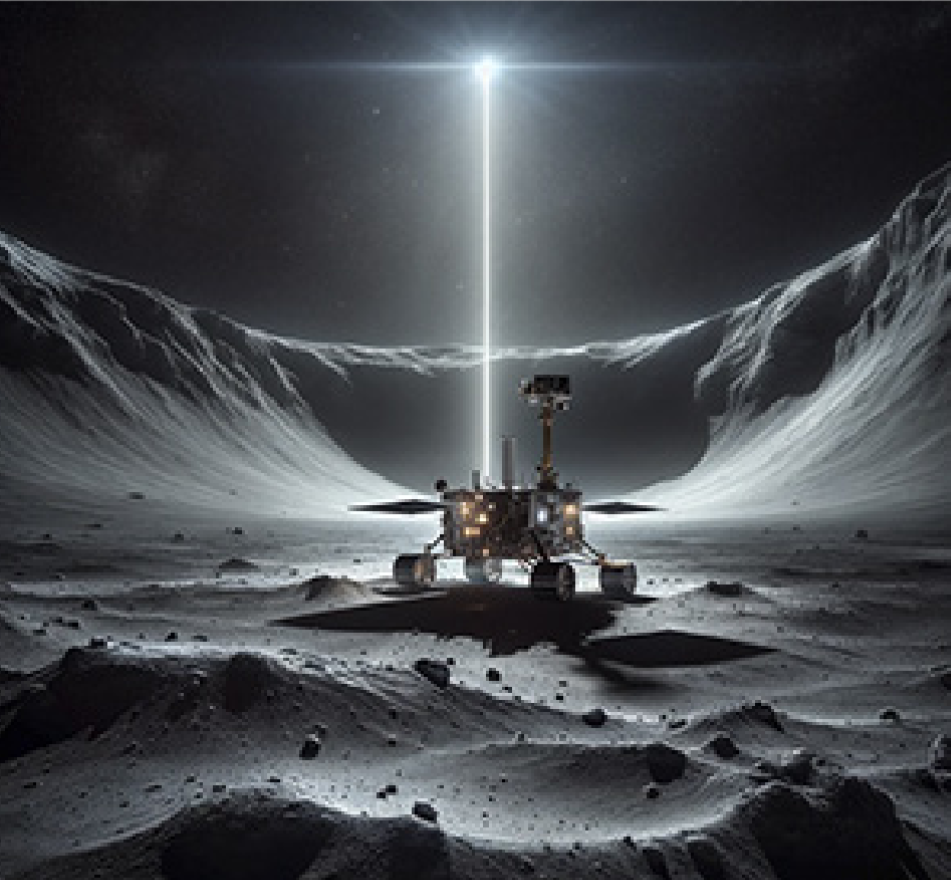
NASA’s Revolutionary Aerospace Systems Concepts – Academic Linkage (RASC-AL): Large Scale Lunar Crater Prospector
RASC-AL is a national NASA competition to develop a solution for exploring the harsh
craters of the lunar south pole for a full year in search of frozen ice. The RASC-GULLS
have developed a concept for a self-sustaining rover that is able to perform power-
intensive prospecting tasks with the support of a power-beaming satellite overhead,
tens of kilometers away, as well as a physical rover-tracker model to demonstrate this
concept. The concept will be able to gather new and conclusive evidence about the
moon’s subsurface.
- Team Members: Melmar Almodiel, Samson Ande, Jay Diorio, Adeline Guizar, Dominic Malanga, EJ Milan,
Steven Navarro, Lorans Taqian, Zaid Yasin - Advisors: Oscar Correa, Prof. Barry Dorr, and Dr. Scott Shaffar, SDSU
- Sponsor: SDSU Student Success Fee
- RASC-GULLS's Video
- Team RASC-GULLS's Poster

Multi-Domain Vehicle Project
The Multi-Domain Vehicle is an amphibious vehicle that will operate in sea, surf, and
land with an advanced three position extendable suspension and propulsion system
to successfully navigate the transition between sea and land. The electrically powered
scaled vehicle design will accommodate for traction, enable water propulsion, and
provide a transition between land and sea tactical operations.
- Team Members: Shane Agena, Gerardo Cerpa, Alexis Chavez, Faris Griffin, Brian Herrin, Bryan Maldonaldo,
Ramses Montes, Adam Rigney, Travis Tran - Advisors: Mr. William Shepherd, Systems Engineering Research Center, Stevens Institute
Dr. Scott Shaffar and Prof. Barry Dorr, SDSU - Sponsor: Systems Engineering Research Center and Stevens Institute
- R.E.S.S.T. (Remote Earth Sea Systems Technology) 's Video
- Team R.E.S.S.T. (Remote Earth Sea Systems Technology) 's Poster
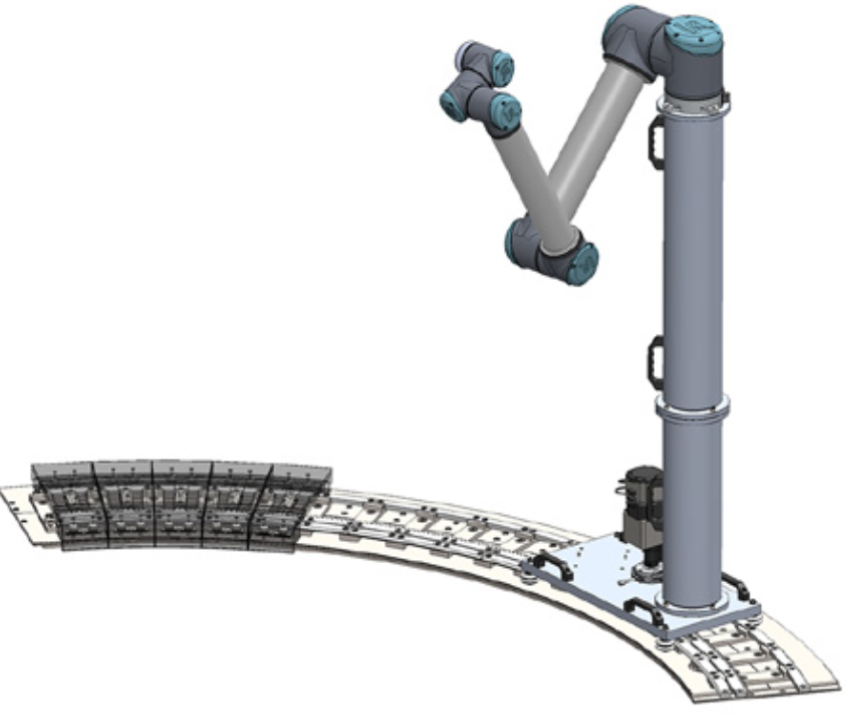
Development and Integration of a 7th Axis Rail System for a Fusion Tokamak Robot
DIII-D National Fusion Facility, operated by General Atomics, is pioneering the science and
innovative technology that will enable the development of nuclear fusion as an energy
source for the next generation. A 6-axis robotic arm nicknamed ROSIE is currently used
in the DIII-D program to weld studs and take measurements inside the vacuum vessel.
This project aims to extend ROSIE’s capabilities by adding a circular rail and powered cart
system, and integrating the cart into ROSIE’s control system as a 7th axis
- Team Members: Arenzana Tristan, Brillantes Richard, Ludkevicz Brenden, Sanabria Gonzalez Alan, Sanchez Steven,
Waltermire Luke - Advisors: Dr. Zahra Nili Ahmadabadi, Prof. Barry Dorr, and Dr. Scott Shaffar, SDSU
- Sponsor: SDSU Mechanical Engineering
- Ring Around the R.O.S.I.E.'s Video
- Team Ring Around the R.O.S.I.E.'s Poster

Acoustic Ocean Monitoring Device
Our device targets the frequency spectrum of whale songs as well as other sounds
in the ocean. This is achieved by the implementation of both hardware and software
that works together to amplify sound, mitigate noise interference, output sound that
can be listened to, and transcribes the data into a form that can later be used in
additional audio processing.
- Team Members: Jana Gonzalez, Gabriel Lang, James Timothy O’Shea, Hien Phan, Abraham Shalash, Cristian Zuniga
- Advisors: Prof. Barry Dorr, PE
Sponsor: SDSU Electrical and Computer Engineering - SDSU Hydrophone Agents (SHA)'s Video

Climate Controlled UV Curing Chamber for 3D Printed Parts
SDSU WaveCure has partnered with Masimo to design, document and fabricate a UV
Curing Chamber for 3D printed parts. With a climate control system, hands-free access
and hybrid UV-CFL, UV-LED technology, the UV curing chamber will operate for a set and
controlled duration as inputted by the user on the touchscreen interface. The chamber
features a rotating turntable for controlled uniform UV exposure to enhance a post-print
UV curing process to stabilize material properties of parts printed using DLP, SLA, and
MSLA.
- Team Members: Talal Alkhashti, Willie Arroyo Alva, Benjamin Daluz, Maxwell Lee, Esmeralda Marquez,
Ryan McKnight, Amber O’Brien, Ethan Taylor - Advisors: Austin Pike, Glenn Pohly, and Jake Prittie, Masimo
Dr. Scott Shaffar and Prof. Barry Dorr, SDSU - Sponsor: Masimo
- SDSU WaveCure's Video
- Team SDSU WaveCure's Poster

Quiet UAV Test Device and Test Protocol
This project introduces a test rig that will be used for evaluating the noise generation for
various propulsion systems and models. The test rig incorporates advanced sound output
sensors, joint mechanisms, and data acquisition systems to simulate various flight scenarios,
allowing engineers to analyze the UAV’s acoustic signature response. Innovative toroidal
propellers are used while optimizing shape and geometry to reduce the noise signature of
the propulsion system and increase stealth technology.
- Team Members: Alejandro Ballesteros, Juan Flores, Muhammed Jaafar, Kylie Kimura, Zachary Lester,
Khaled Mohieddin, Lia Selena Baluran, Ethan Tift, Ethan Van Buren - Advisors: Sean Malone, Army Special Operations Robotics Division
Scott Moore, United States Army Special Operations Command Force Modernization Center
Edward Pernotto, Systems Engineering Research Center
Michael DeLorme and William Shepard, Capstone Marketplace
Prof. Barry Dorr and Dr. Scott Shaffar, SDSU - Sponsor: Systems Engineering Research Center and Stevens Institute
- Stealth Propulsion Systems's Video
- Team Stealth Propulsion Systems's Poster
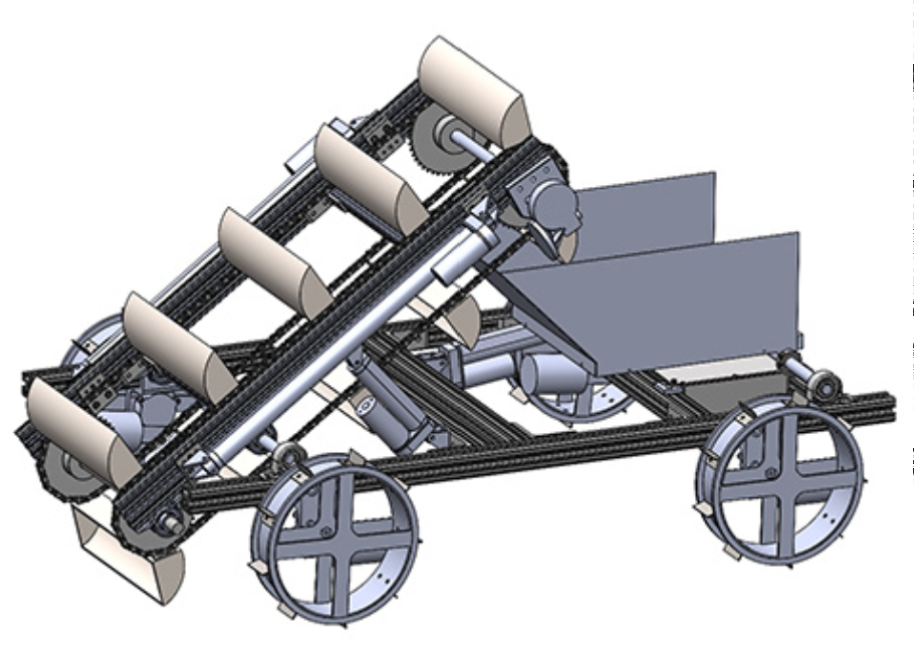
NASA Artemis 2024 Lunabotics and Beyond
Team ARES (Aztec Regolith Environment Sculptor) is representing San Diego State
University in the NASA Lunabotics 2024 Competition. The team is tasked with the
design and build of a telerobotic rover capable of traversing, excavating, transporting,
and depositing lunar regolith. This supports NASA’s Artemis missions, in which
they plan to use in-situ resources for lunar construction. The team will travel to
Kennedy Space Center to compete in a simulated deployment mission against other
national universities.
- Team Members: Montserrat Castel, Hannah Hong, Christian Monroy, Patricia Munn, Sara Pirasteh, Stuart Pollmann,
Jack Riffle, Scott Shoupe, Jack Volponi, Andrew Vu - Advisors: Prof. Barry Dorr and Dr. Scott Shaffar, SDSU
- Sponsor: SDSU Student Success Fee
- Team ARES's Video
- Team ARES's Poster
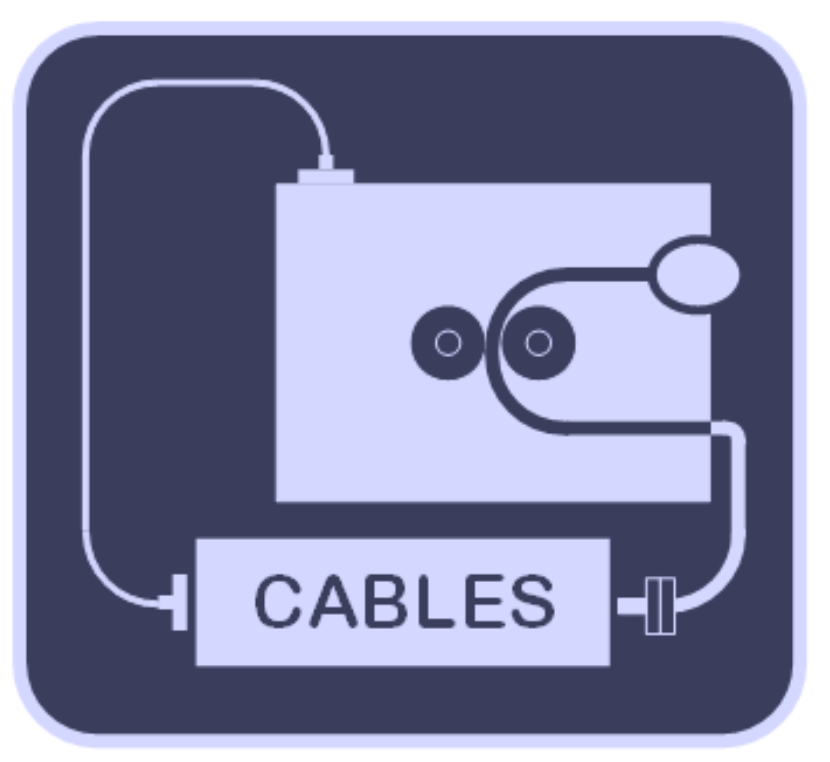
Short Break Detector
The Short Break Detector, designed for MASIMO, is a portable, compact system
that enhances cable testing efficiency by automating fault detection. It integrates
with a cable bend test machine, supports AC/DC power, and uses an ATmega4809
Microcontroller for continuity checks; stopping tests upon fault detection. Data is
recorded to an outputted document file for analysis. Its touchscreen display allows
for easy operation and monitoring, streamlining the testing process with improved
reliability and data accuracy.
- Team Members: Arvin Aquino, Scott Le, Rand Mirza, Brent Son
- Advisors: Prof. Barry Dorr, PE
Mr. Glenn Pohly, Masimo - Sponsor: Masimo
- Team CABLES's Video
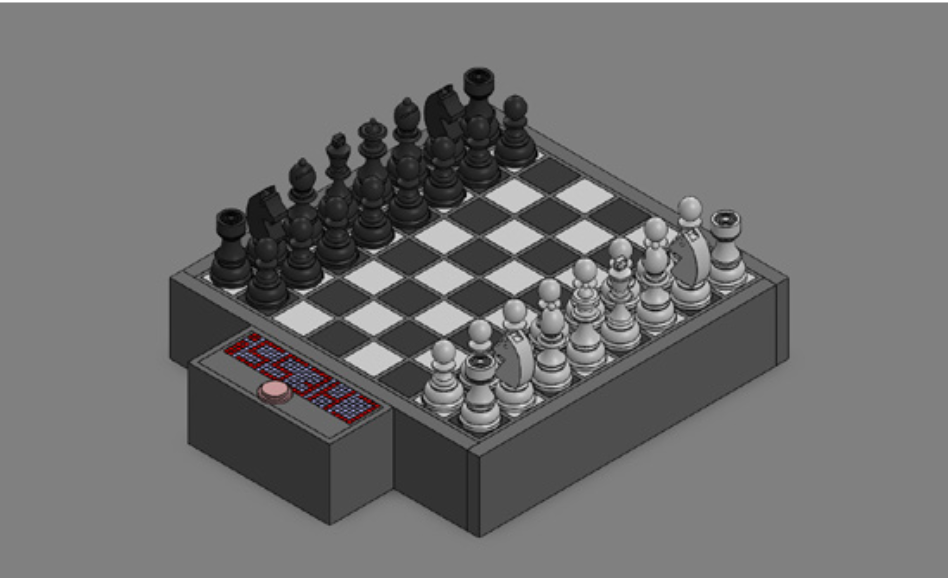
Intelligent Chessboard
Intelligent Chessboard is an interactive chessboard that integrates artificial
intelligence into a physical board. Designed to help learn or hone skills, the user can
play against another user with or without the assistance of AI. Intelligent Chessboard
uses a button to change the difficulty of the AI and scan the board for the current
piece location using RFID technology. Through AI, the board illuminates LEDs under
the board tiles to project all possible and the best possible moves when a piece
is lifted.
- Team Members: Jacob Anderson, Christopher Gonzalez, Noor Jazwari, Josue Rodriguez, Kevin Tran
- Advisors: Prof. Barry Dorr, PE
- Sponsor: SDSU Electrical and Computer Engineering
- Team CHESS's Video
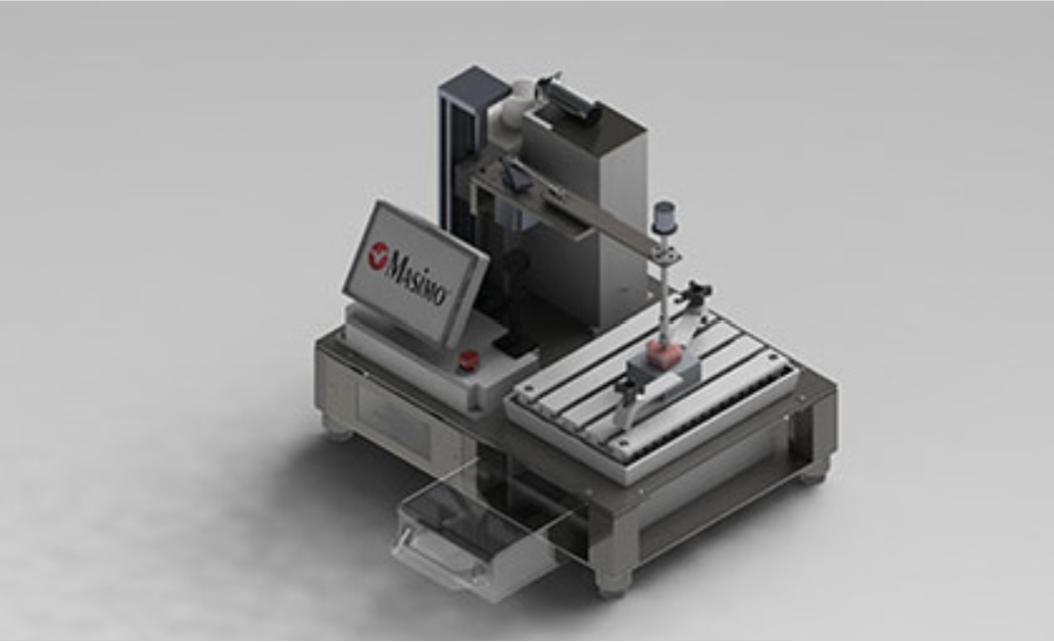
Automated Chemical Wiping System
This project, sponsored by Masimo, aimed to create a standardized testing system
for chemical resistance on medical monitoring products. It employs a fluid delivery
mechanism for cleaning agents followed by wipes under constant pressure.
Controlled through a touch-screen panel, it regulates parameters such as speed and
cycles, equipped with a camera for progress monitoring and memory for test recall.
The user can adjust parameters like wipes, cycle intervals, fluid volume, and duration.
- Team Members: Seba Alkandari, Abraham Arana, Jeanette Arratia, Aaron Ayala, James Burton, Cesar Casas,
Allen Juliano, Donald Luu, Samuel Martinez, Jason Ramirez - Advisors: Jack McCorkle, Desmond Mok, Jake Prittie, Glenn Pohly, and Jonathan Truesdell, Masimo
Dr. Scott Shaffar and Prof. Barry Dorr, SDSU - Sponsor: Masimo
- Team M.A.C.W.E.R.P.'s Video
- Team M.A.C.W.E.R.P.'s Poster
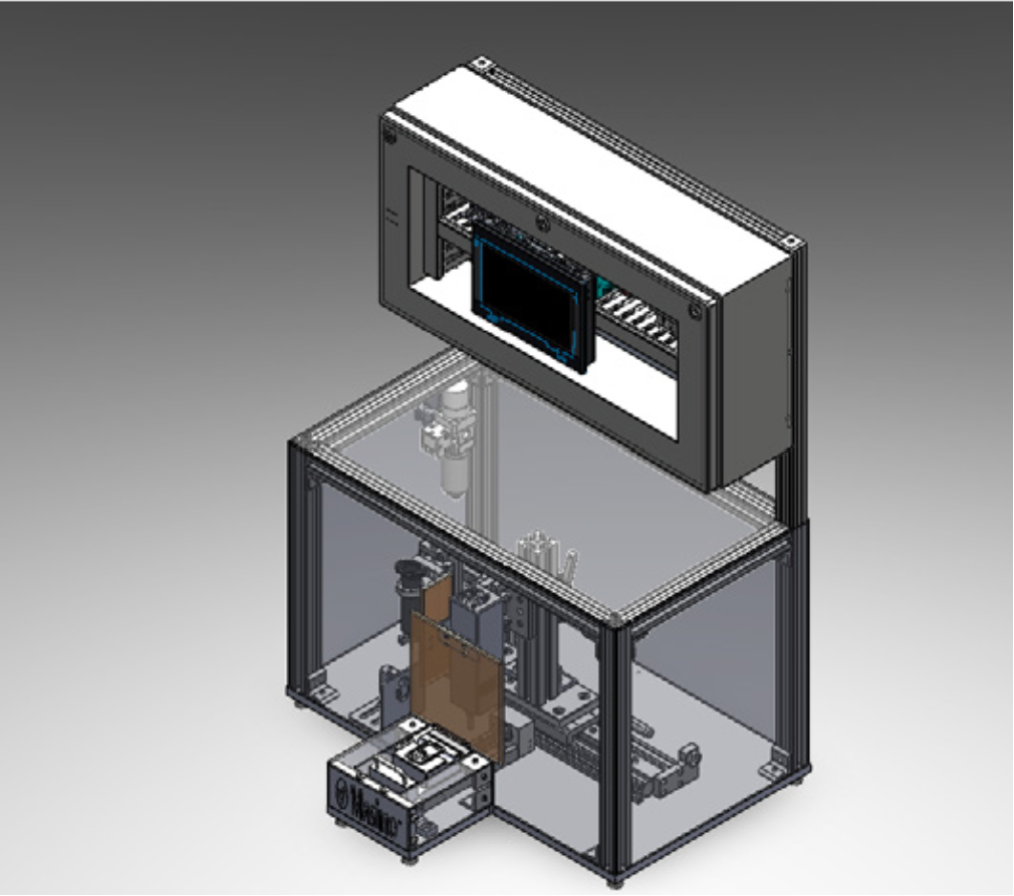
Automated UV Dispense & Cure Station
Masimo’s health-care products require light pipes to provide a path for light to travel
from the inside to the outside of a device. Current assembly of these light pipes
require production-grade manufacturing equipment for large scale operations.
Team Photron was tasked to create a lightweight and cheaper solution for small
scale operations. Using positioning tables along with a combination of pneumatic
and manual guide rails, this device will be capable of producing light tubes with a
repeatability of 0.005”.
- Team Members: Ethan Anderson, Wade Anderson, Steven Awakem, Brandon Cabatu, Mason Cayaban,
Kyle Desamito, Vidal Marquez, Marco Montano, Trent Nguyen, Zachary Payne - Advisors: Stanley Chang, Brendan Green, Marc Laidet, Glenn Pohly, and Pratul Singh, Masimo
Prof. Barry Dorr and Dr. Scott Shaffar, SDSU - Sponsor: Masimo
- Team Photron's Video
- Team Photron's Poster
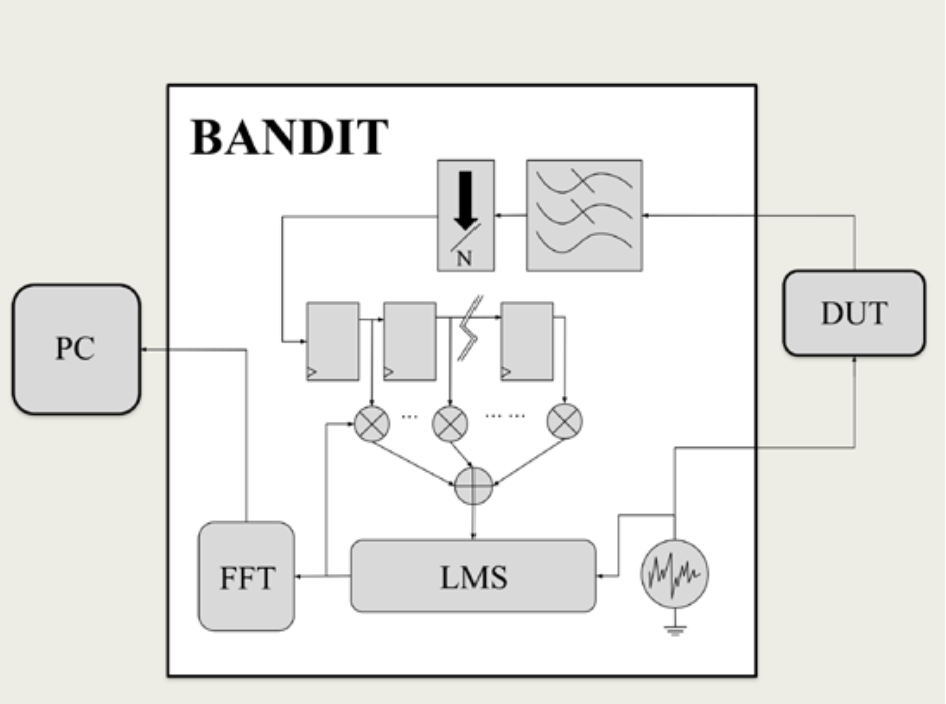
“Bode Analysis N’ Display of Instrument Testing” (BANDIT)
BANDIT is a small, portable, and inexpensive device aimed at providing rapid
assessments of a system’s transfer function assisting in filter design as well as arbitrary
system characterization. Analysis can be performed between 20 Hz and 250 kHz in a
variety of preset ranges within +/- 15% of calibrated reference instruments. The BANDIT
offsets the lack of absolute accuracy by being extremely low cost, $40 per unit, and
executing full characterizations in under 1 second. These runtimes are achieved by
diverging from traditional analog tone-sweep methods and utilizing a fully digital
adaptive filter method. On the fly adjustment of error tolerances, analysis resolution,
and the visualization of real time results can be done via a fully cross platform Python
interface. Fully USB powered, and tightly integrated, BANDIT coupled with the
appropriate probes or transducers is a powerful tool for both the lab and on the go.
- Team Members: Christian Abella, Arianna-Sarahi Bergado, Joshua Cole, Joseph De Vico, Lance Reyes
- Advisors: Prof. Barry Dorr, PE
- Sponsor: SDSU Electrical and Computer Engineering
- The Bode Bandits's Video
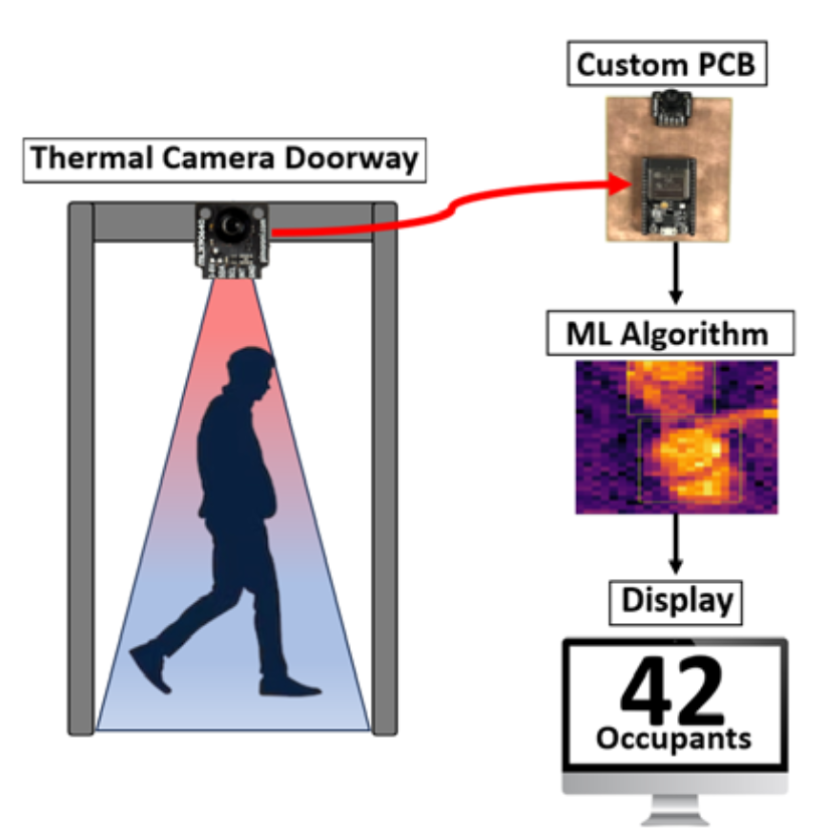
Live Occupancy Automated Tracking System
The People Counter’s project tracks the number of occupants within a confined
area in real-time. We employ a thermal camera and machine learning algorithms to
recognize when entrants pass through our fabricated doorway. It accurately counts
when individuals enter or exit the area thus automating the tedious job of manually
counting occupants. Our design is portable, and scalable to multiple entry points.
- Team Members: Jack Curley, Leon Duong, Rani Jabbar, Hayden Thai, Afnan Yousuf
- Advisors: Prof. Barry Dorr, PE
- Sponsor: SDSU Electrical and Computer Engineering
- The People Counters's Video
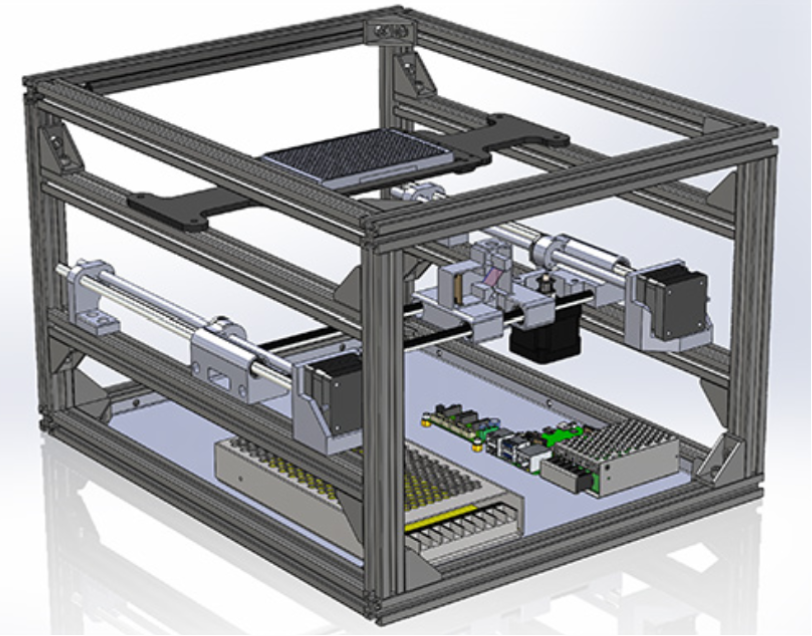
Time-Resolved Fluorescence Reader
In collaboration with Ascential Technologies, our team has developed a device to
measure biomarkers like Europium (III) from samples in a standard 384-well microplate.
Central to our design is an optical module focusing UV light onto samples and capturing
their red fluorescence emissions. Our device serves as a platform to accelerate medical
research and development; biomarker measurement is crucial in cell biology assays, and
our device proves as a cost-effective yet highly sensitive and precise instrument for this.
- Team Members: Amber Carreno, Madison Darnauer, Jacob Giesing, Jason Gumbayan, Luan Lam, Justin Lee,
Adam Reyes, Cyrus Rouzitalab, Ethan Zaro - Advisors: Victor Escobedo, Dusty Fisk, Kris Gaard, Dr. Al Kellner, and John Reep, Ascential Technologies
Prof. Barry Dorr and Dr. Scott Shaffar, SDSU - Sponsor: Ascential Technologies Medical & Life Sciences Division
- TRF Innovations's Video
- Team TRF Innovations's Poster
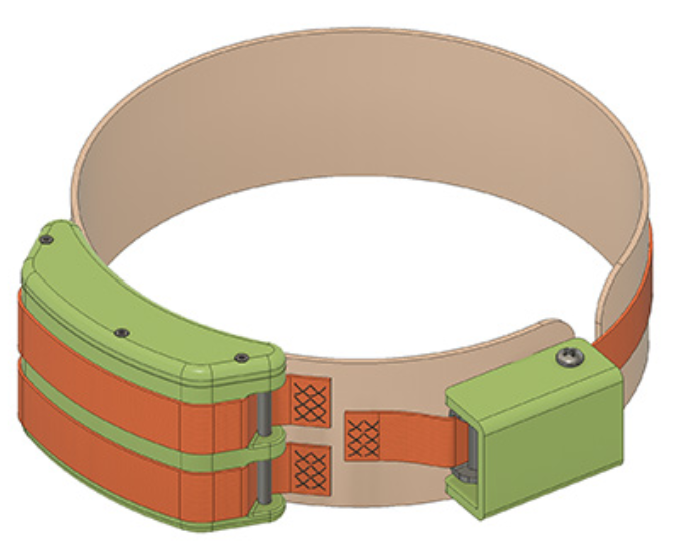
The Trunk Tracker: An Elephant Behavior Monitoring Anklet
The San Diego Zoo Wildlife Alliance has partnered with Trunk Tech to create an
anklet for African elephants to record their movement and behavior patterns. The
device uses LoraWAN technology to transmit data logging status and contains
an accelerometer for data collection. The tamper-proof enclosure is capable of
withstanding elemental factors present in desert conditions and is water and
high-impact resistant. The sponsor aims to use this technology to protect wild
elephant populations at their partner site in Kenya.
- Team Members: Courtney Chase, Alexander Cherry, Jacob Flaxman, Rachel Gerrard, Ryan Kiok, Connor Martorana,
Roberto Montano Bermudez, Eduardo Tovar, Anthony Vasquez - Advisors: Katie Garwood, Ian Ingram, and Kyra Swanson, San Diego Zoo Wildlife Alliance
Dr. Scott Shaffar and Prof. Barry Dorr, SDSU - Sponsor: San Diego Zoo Wildlife Alliance
- Trunk Tech's Video
- Team Trunk Tech's Poster
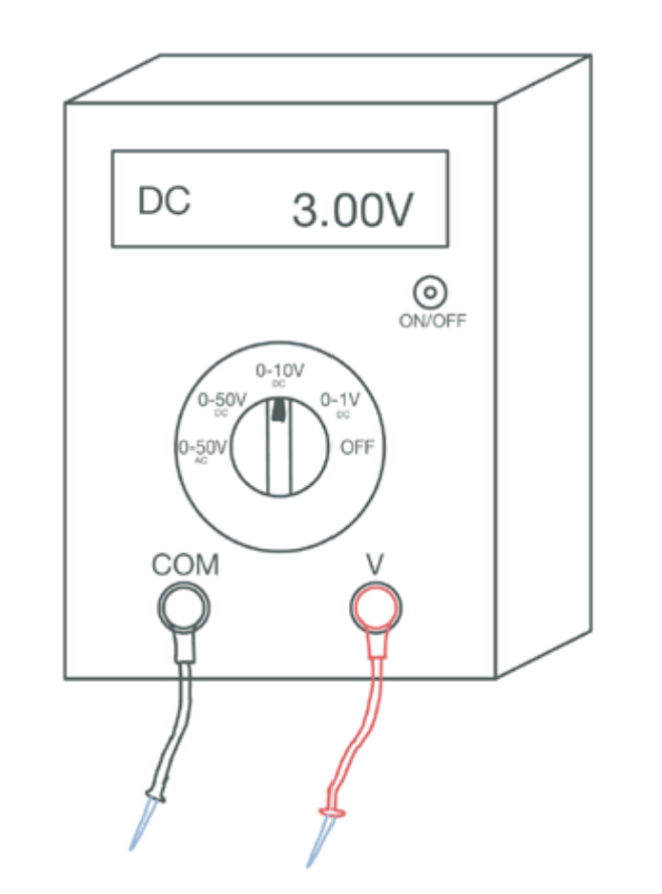
Digital Multi-Range Voltmeter
The Voltage Vipers team have been tasked with designing and creating a digital
voltmeter. A voltage selector switch will help select AC and 3 DC voltage ranges.
Input voltage will be filtered using an anti-aliasing filter to reduce noise during the
sampling of the signal. The AC voltage will be measured using a true RMS algorithm,
enabling the device to be capable of measuring sinusoidal and non-sinusoidal
waveforms such as square or triangle waves. Lastly, the device will feature an LCD
screen to display the measurement to the user.
- Team Members: Aghared Al Yousif, Isaac Castro, Fernando Garcia, Brian Hamler, Raul Hernandez, Cade Webb
- Advisors: Prof. Barry Dorr, PE
Vidya Rangaswamy, SDSU - Sponsor: SDSU Electrical and Computer Engineering
- V.O.L.T. Vipers's Video

Physical Distress Monitor
Sponsored by the Systems Engineering Research Center and in collaboration with
Masimo, this project aims to create a wearable device for health monitoring of military
personnel during training or operations. Utilizing non-invasive sensors to measure
vital signs like pulse oximetry, body temperature, and galvanic skin response for
hydration, the device will use machine learning to detect signs of physical distress
early. Its design focuses on ensuring the safety and well-being of soldiers by
providing real-time health data for immediate response.
- Team Members: Javier Cortes, Marshall Eucker, Mohammad Farah, Joshua Garcia, Ramez Ghattas, Ali Hashim,
Joseph Hotto, Davin Kelly, Nicholaus Smith - Advisors: Glenn Pohly, Masimo
Dr. Scott Shaffar and Prof. Barry Dorr, SDSU
Christopher Wilkerson and William Shepard, Systems Engineering Research Center - Sponsor: Systems Engineering Research Center, Stevens Institute
- Vital Metrix's Video
- Team Vital Metrix's Poster
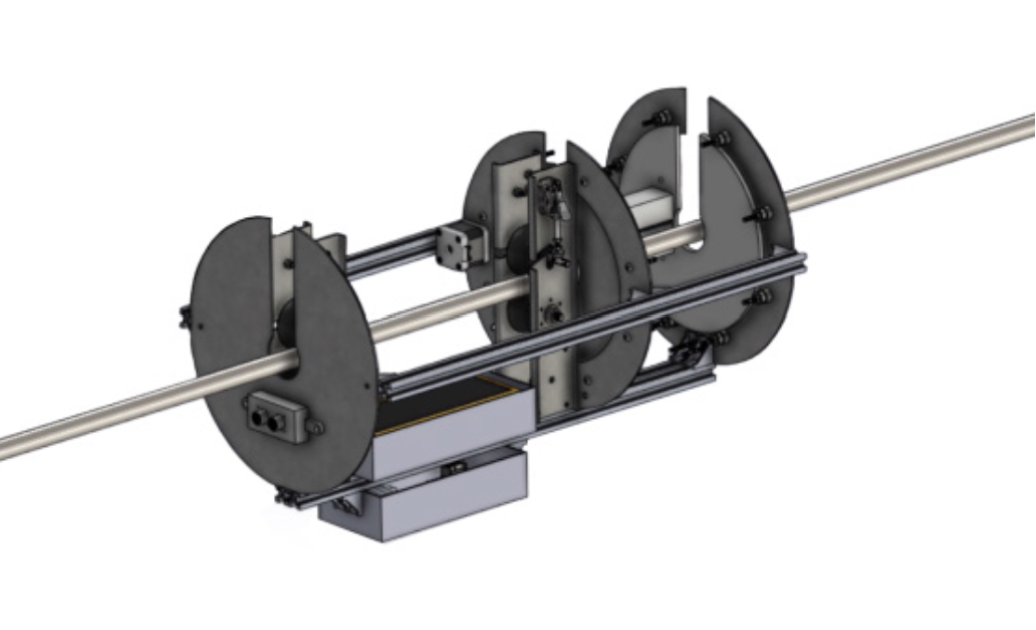
Composite WiRE Wrap Robotic System
The Composite WiRE Wrap Robotic System addresses the critical need to enhance
the efficiency of power transmission by mitigating the issue of power line sag.
This project stands to revolutionize repair methods, potentially saving millions in
replacement costs and reducing wildfire risks. We have developed a user-friendly,
autonomous robotic system to wrap a composite material, resin-coated carbon
fiber fabric, around existing lines, strengthening infrastructure and decreasing
power losses.
- Team Members: Jonathan Arabo, Andrew Deguzman, Brad Leroy DelaLlana, Tuong Do, Audrey Meador, Victor Reyes,
Richard Rosengren, Brendon Swierczewski, Mario Velez - Advisors: Dr. Saeed Manshadi, Dr. Zahra Nili Ahmadabadi, Prof. Barry Dorr, and Dr. Scott Shaffar, SDSU
- Sponsor: SDSU Electrical & Computer Engineering and SDSU Mechanical Engineering
- Wrap Tech's Video
- Team Wrap Tech's Poster

